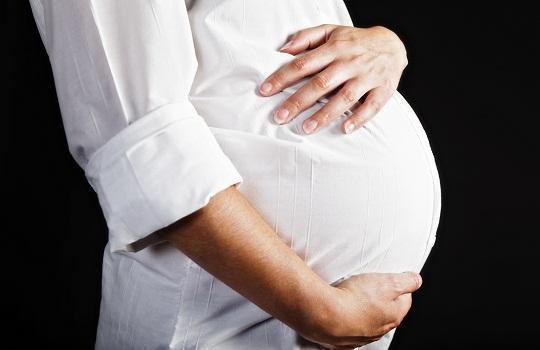While the nation may be celebrating the arrival of Prince George of Cambridge and the recent news that Zara Philips is also expecting, it seems that this year’s Royal baby boom is more widespread given recent figures from the Office of National Statistics (ONS).
Baby Boom Britain
Last year’s ONS figures show that Britain has seen the highest number of births since 1971 and out of the total of 724,000 babies born, the highest percentage increase in births relate to migrant and older mothers (i.e. those over 40).
In light of these statistics employers are likely to find more women from a migrant background becoming pregnant and taking maternity leave, if they are eligible. In the future, employers can also expect to see a significant rise in babies born to mothers who are over 40 and this group has now overtaken teen mums. Given the changing social patterns and medical advances in Britain it seems that it is now becoming the norm to start a family later in life and once women are established in their careers.
So employers will need to consider whether it has a high migrant workforce. If so, then prevention of illegal working checks must be carried out fairly for all employees rather than particular racial groups to avoid falling foul of the law.
Those with a large number of female employees over 40 will need to be aware that key players within its business may choose the option to have babies later in life and at a time when their careers are established. Employers will have to be careful not to dismiss out of hand more senior employees working flexibly and consider flexible working as a model to retain talented women. Unfavourable treatment towards an employee over 40 could give rise to age discrimination and/or constructive unfair dismissal claims, where flexible working is not fully considered.
What are the legal rights of individuals who are pregnant or on maternity leave?
As a recap pregnant employees are entitled to paid time off for antenatal care, maternity leave, maternity pay and protection against unfair treatment, discrimination or dismissal.
Employees on maternity leave may work during their maternity leave for up to 10 “keeping in touch” days by mutual agreement and this will not bring their leave to an end.
In addition, employees on maternity leave have the right to return to their old job or, in very limited circumstances a similar job which is suitable for them. These employees will return to work with their seniority of employment preserved and have the benefit of any changes to their terms and conditions, as if they had never been away. For example, they will be entitled to any pay rises made in their absence and continue to accrue contractual holiday entitlement during their maternity leave.
It is also important to note that the Equality Act 2010 (EQA) prohibits discrimination against a woman who is pregnant or on maternity leave. An employer must not treat:
- a woman unfavourably because of her pregnancy or illness suffered as a result of her pregnancy during the protected period(section 18(2) EQA)
- an employee unfavourably because she is on compulsory maternity leave or because she is exercising, seeking to exercise or has exercised her right to ordinary or additional maternity leave (section 18(3) and (4) of the EQA)
Interestingly, the EQA protects a wider group of individuals that just employees, including, self-employed contractors and temporary workers against pregnancy discrimination. Employers must therefore ensure that their treatment of the above individuals is not unfavourable because of the woman’s pregnancy or pregnancy related illness during the recruitment stages or whilst an individual is engaged on temporary assignment.
So when does the employer get caught out?
It is no wonder that it is easy for employers to trip up in this complex area of law. Recent media attention on pregnancy and maternity legal rights in the workplace has highlighted common areas of concerns for employers. The fashion designer Anya Hindmarch considers that maternity laws are stifling women in the workplace and the legal position may lead to employers recruiting more men. She is not the first person to voice such concerns.
In the difficult economic climate, there is also worrying trend of up to one in seven employees being made redundant before or after their return from maternity leave. While it is not unlawful to make an employee on maternity leave redundant, the risk of an unfair dismissal discrimination claim is high if a scrupulously fair selection process is not followed.
How do employers get ahead of the game?
Below are some best practice tips for employers seeking to avoid legal claims to consider:
- Ensure that recruitment decisions are fair and non-discriminatory such as, not making a decision to recruit based on assumptions an employee might become pregnant;
- Consider the health and safety of a pregnant employee and whether it is appropriate to carry out a risk assessment, which is only triggered in certain circumstances (e.g. if the employee has notified her employer in writing that she is pregnant or where the work may cause harm to the employee or the unborn baby);
- Provide individuals with fair opportunities to apply for promotion in particular, if they are away from the business on maternity leave;
- Keep individuals up to date on training and development opportunities during maternity leave and check how much contact the employee would like during their maternity leave;
- Consider the following when proposing to make an employee who is pregnant or on maternity leave redundant:
- Whether there is a genuine reason for redundancy;
- Ensure the selection and scoring is fair both to the woman and her colleagues e.g. only adjust scoring to compensate an employee who is pregnant or on maternity leave to a level that is reasonably necessary, not beyond.
- Enter meaningful consultation with the employee to discuss ways in which to avoid the proposed redundancy and don’t forget about employees on maternity leave during any collective consultation process;
- If a woman on maternity leave is made redundant offer them any suitable alternative employment (with the employer, associated employer or successor employer ahead of any other employees not on leave).
- Discuss any flexible working request with the eligible employee by meeting with them within a prescribed period of time. Discussions between the eligible employee and employer must be conducted with a view to seeking agreement by considering ways to implement changes to working conditions rather then rejecting it without due consideration.
What does this mean for employers?
Historically, claims for pregnancy and maternity discrimination has been low (typically 3% of the total complaints to the Employment Tribunal) but with the rise in birth rate and pregnancy and maternity discrimination being hot topics in the news, it is likely that these claims will be set to rise in the future.
Employers will therefore need to have a wider consideration of the discrimination claims that may arise in the workplace (e.g. age and race discrimination) for both employees and other individuals who are pregnant or on maternity leave.
It is therefore the right time for employers to check and update policies and procedures and to ensure that management are fully trained on them so that they do not incur liability for the employer.
Due to the significant legal consequences employers who are in doubt about how to proceed in respect of a woman who is pregnant or on maternity leave should seek legal advice at any early stage.








